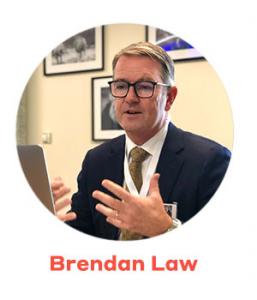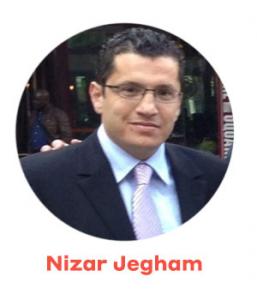Pioneering a Digital Blueprint for Education’s next Frontier in KSA
As fundamental transformations in the education sector emerge, digital breakthroughs and blue-sky thinking are helping us reimagine learning ecosystems in an evolving world.
This is evident in the Kingdom of Saudi Arabia, where world-class education projects aren’t just changing the way knowledge is taught; they’re changing the paradigm altogether and giving new meaning to the interplay between students and their learning environments.
In this episode, we discuss how digital-first thinking, holistic innovation, and flexible placemaking are laying the foundation for learning environments that will empower students to take charge of the spaces in which they learn.
Hosted by Alia Abdulmalik, a Project Manager for WSP Middle East’s Project Management Services business, this episode features Brendan Law, who is the Director General of Misk Schools based in Riyadh, as well as Nizar Jegham, a Digital Advisory Director for WSP Middle East’s Advisory Services business.
Listen via Spotify:
Also listen on:-
Unable to listen? Here’s an overview of the discussion:
Changing the education paradigm
Brendan Law: “Our vision, as defined by our founder, His Royal Highness Crown Prince Mohammed Bin Salman Al Saud is to work specifically on a new paradigm in education to transform the educational landscape. In terms of what we do at Misk Schools our focus is very much on our current children and giving them the best possible educational opportunities.
“But there’s a wider remit to it, which is to grow and develop new initiatives in education, to be innovative, to be groundbreaking, and to be pioneering in many ways, and to not necessarily be disruptive in the sense of trying to be way out there. But to do things, which we believe will align very well with Saudi Vision 2030.
“So for us, alongside looking at Vision 2030 and ensuring that our curriculum encapsulates that, and the building and the development of a new campus, which we’re engaged with WSP and others at the moment, is to look at ways in which we can create spaces that are really innovative and effective to improve learning opportunities for children.
“For us, that means making sure that the learning is personalized. In other words, it’s not fitting the child to the curriculum, which is traditional, but actually to fit the curriculum to the child to give each and every child within our curriculum a personalised learning pathway… we want our children to be maker-centric, we want them not to be users and consumers, but actually to be creators.”
“We want our children to be maker-centric, we want them not to be users and consumers, but actually to be creators.”
Digital ambitions
Nizar Jegham: “The ambition of Digital Advisory is to help our clients use and leverage technology, data and service delivery models to achieve their business objectives. We support the client from creating implementing strategies for smart cities, communities and places, but also we help them in organising and making sense of their data through modeling and analytics to generate relevant insights and also protect their data, as well as help our client balancing the cost versus the performance of their assets.
“Here when we say asset, it can be a school like Misk Schools, it can be a building, it can be planned and we can optimise their performance throughout the lifecycle through asset management, digital twins, and so on and so forth.
“In terms of WSP, we are an enabler of this journey. Obviously WSP is an engineering firm, we help on the physical aspects of design and so on from a physical standpoint. But zooming into digital, our role is to really start from the user experience and champion human-centric designs and people-centric placemaking.”
Can digital and physical learning environments coexist?
Brendan Law: “Without a doubt they (digital and physical realms) can coexist. In fact, they must coexist. And as I was saying earlier with the analogy around the foundations, as well as the tower, it’s the digital areas, the really innovative and exciting stuff that the children get excited about… they’re probably less excited about learning their timetables than they are about getting stuck into new digital technologies.
“Of course, they want to put the headsets on rather than doing some of the bump and grind stuff that comes with education. You’ve got to have both and so as I was saying earlier in terms of the learning space, we must create opportunities for children to really be taken into these new paradigms. On our new campus. For example, we’re building an incredible eSports facility alongside the traditional sports halls… we want children to be in that maker centered digital space.
“In all sorts of ways, you can take technology and the rapid development of technology and utilise it within the learning space in really new and creative and exciting ways, which also determines a lot of what I said earlier about personalized learning, experiential learning, and maker centered learning.”
“It’s the digital areas, the really innovative and exciting stuff that the children get excited about… they’re probably less excited about learning their timetables than they are about getting stuck into new digital technologies.”
Setting foundations for education’s digital frontier in Saudi Arabia
Brendan Law: “Before they do anything else, children need to know how to read, they need to know how to write, they need to know how to do core maths… that’s why I think foundations are so important.
“Even though we’re doing some really cutting edge and very innovative things in the area of digital space and, and especially around the new design of the school campus – the new campus will also have a lot of foundational stuff, core business, good basic things children need to learn such as, for example, fine motor skills and gross motor skills. We don’t want children to be wearing headsets all day looking at a virtual reality, they’ve got to go back to the basics. You can’t throw the foundations out, because the building will fall down.”
“There’s so many ways in which we can take the lid off education by utilising digital tools and being more and more creative. So now that the foundations are solidly in place, we’re looking at many other opportunities outside of the normal curriculum to utilise the tools at our disposal and we’ve all become adept at use it in in very effective and creative ways.”
Nizar Jegham: “I agree with Brendan in the sense that it is a transition not a disconnect from whatever was done before. So, we are building on the way education was delivered before and we are leveraging digital tools which offer another set of horizons and opportunities that we can lean on.”
Want to hear more insights from our industry’s leading experts? Subscribe to the Anticipate Podcast channel by clicking here.
Are you interested in connecting with our podcast guests? Reach out to them on LinkedIn by clicking their images below.



